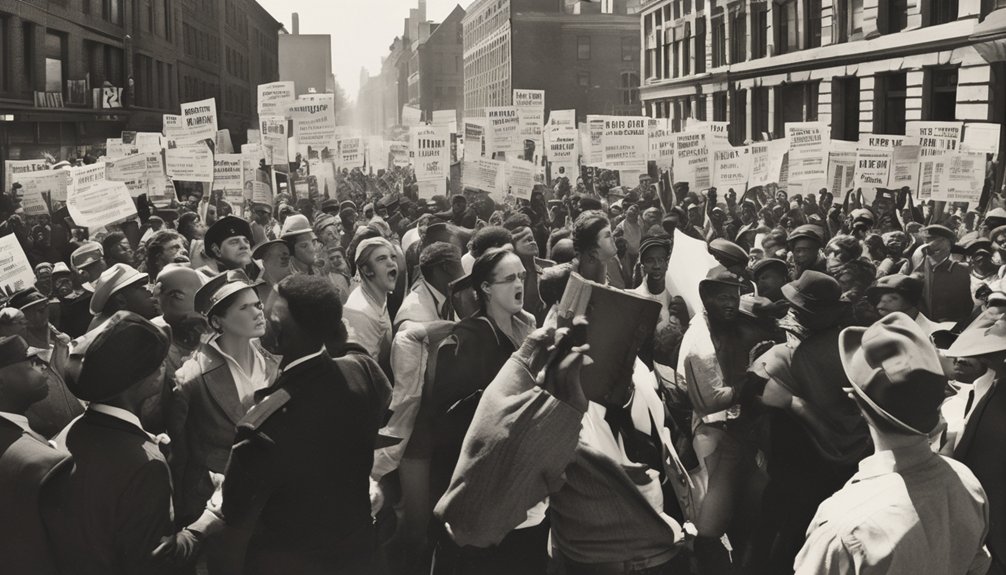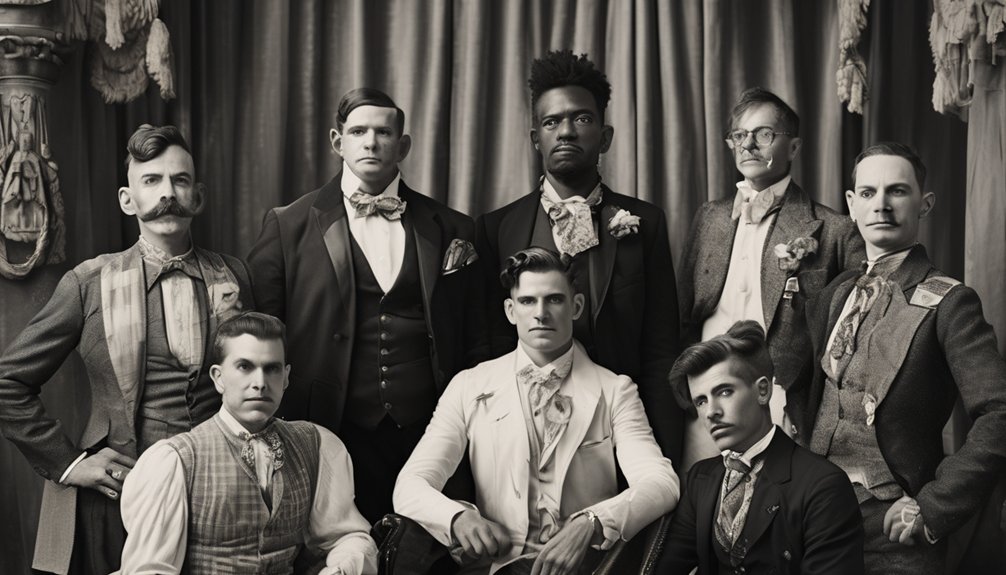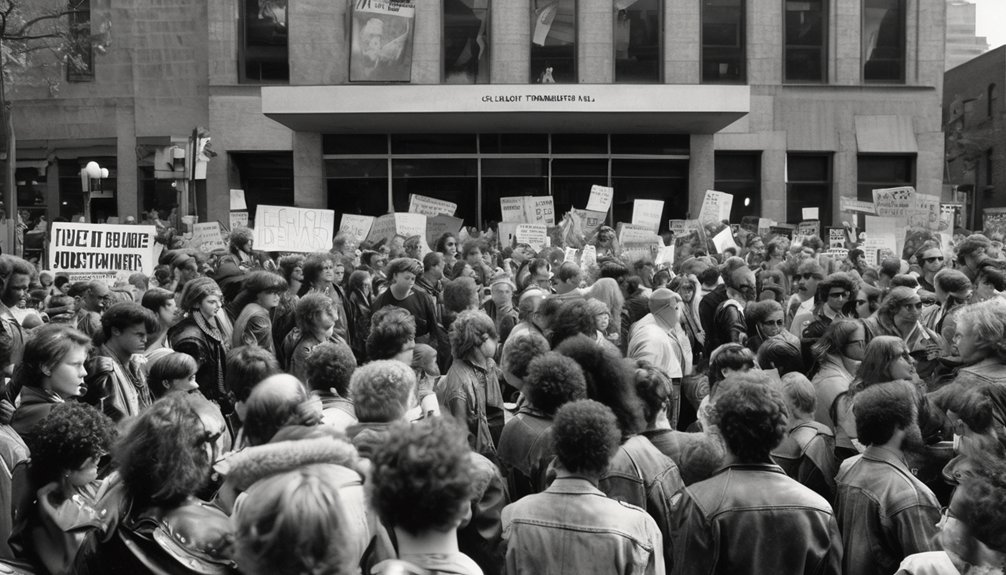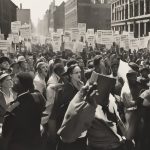History of Transmasculine People in LGBTQ+ Movements


Table of Contents
ToggleConsider the shadows often cast by prominent figures like Marsha P. Johnson and Sylvia Rivera during pivotal LGBTQ+ events. Transmasculine voices have played similarly crucial roles, yet their contributions frequently go unrecognized. From Lou Sullivan‘s advocacy to BIPOC transmasculine experiences in contemporary movements, there’s a complex history that deserves exploration. What factors have contributed to this ongoing marginalization, and how can we guarantee that transmasculine narratives ultimately take center stage?
While transmasculine individuals have always existed, their stories have frequently been overlooked within both LGBTQ+ movements and broader historical narratives. This invisibility stems from a predominant focus on transfeminine experiences, often leaving transmasculine voices in the shadows. Historical figures, such as “female husbands,” reveal complexities in transmasculine identities but are frequently misclassified under contemporary identity standards. The lack of gender markers on birth records complicates accurate documentation of those assigned female at birth. Furthermore, BIPOC transmasculine individuals face intersectional challenges that further marginalize their experiences, as mainstream narratives often privilege whiteness. To fully understand LGBTQ+ narratives, we must actively seek representation that honors the rich, diverse histories of transmasculine individuals, challenging traditional gender norms and celebrating their contributions.

Pioneers of transmasculine advocacy have reshaped the landscape of LGBTQ+ movements, asserting the visibility and rights of transmasculine individuals through their groundbreaking work. Figures like Amelio Robles Ávila, a colonel in the Mexican Revolution, paved the way for recognition in historical narratives. Lou Sullivan’s self-identification as a gay trans man fostered community and advocacy, while Alexander John Goodrum highlighted the intersectionality of race and disability. Organizations like FTM International, founded by Rupert Raj, have provided critical support. The Stonewall Riots, led by Sylvia Rivera and Marsha P. Johnson, underscored the significance of transmasculine voices.
| Pioneer | Contribution | Impact |
|---|---|---|
| Amelio Robles Ávila | Historical visibility in the Mexican Revolution | Recognition of transmasculine identities |
| Lou Sullivan | Initial self-identified gay trans man | Community-building efforts |
| FTM International | Resources for transmasculine individuals | Advocacy for trans rights |

The AIDS crisis of the 1980s profoundly affected transmasculine visibility within LGBTQ+ movements, as the loss of life and resources disproportionately impacted this community. Many transmasculine individuals faced significant barriers to healthcare, often overlooked in discussions about the epidemic. Activists like Lou Sullivan illuminated the intersectionality of trans identities and the AIDS crisis, advocating for inclusive healthcare and recognition of transmasculine experiences. This crisis spurred grassroots organizing and mutual aid, fostering community solidarity amid pervasive invisibility. As awareness of AIDS increased, the urgent need for intersectional advocacy emerged, highlighting calls for transmasculine voices in HIV/AIDS research and policy-making. Ultimately, the crisis catalyzed a push for greater visibility and inclusion within the broader landscape of LGBTQ+ advocacy.
As contemporary transmasculine figures emerge and gain recognition, they play pivotal roles in reshaping societal perceptions and advancing LGBTQ+ rights. Figures like Schuyler Bailar challenge gender norms as the initial openly trans athlete in NCAA Division 1 sports, promoting visibility for transmasculine individuals. Kylar W. Broadus, through his testimony before the U.S. Senate, highlights the intersectional challenges faced by transgender people of color, while Laith Ashley advocates for trans rights within media, enhancing representation in fashion. Alexander John Goodrum laid foundational work in transgender advocacy with TGNet Arizona, and Patricio Manuel’s professional boxing career breaks barriers in combat sports. Together, these contemporary figures exemplify the power of activism in transforming perceptions and fostering inclusivity for transmasculine communities.
While many advancements have been made in the fight for LGBTQ+ rights, transmasculine individuals often find themselves traversing a landscape that still underrepresents their experiences and challenges. The legacy of the Stonewall Riots, largely driven by transmasculine and gender non-conforming people of color, underscores their crucial role in advocacy. Yet, ongoing discrimination and lack of visibility persist, particularly within marginalized communities. Contemporary figures like Kylar W. Broadus and Schuyler Bailar highlight the urgent need for tailored advocacy that recognizes the intersectionality of race, class, and gender. By amplifying transmasculine voices and addressing their unique vulnerabilities, we can foster a more inclusive movement that guarantees all individuals receive the rights and representation they deserve in the broader LGBTQ+ landscape.
You could say the LGBTQ+ movement began with significant events like the Stonewall Riots, where activists like Marsha P. Johnson and Sylvia Rivera fought for justice. Harvey Milk‘s political activism further galvanized support, emphasizing intersectionality issues and advocating for gender identity rights. These historical milestones laid the groundwork for Pride Parades and the development of queer theory, creating a more inclusive framework for LGBTQ+ activism that continues to evolve today.
LGBTQ people faced harsh discrimination laws and societal norms that criminalized their identities. Medical practices often denied them crucial care, perpetuating visibility issues and worsening mental health. Historical figures fought against these injustices, yet activism challenges persisted, especially for those with intersectional identities. Cultural acceptance was a distant dream, with many enduring a painful criminalization history. This struggle for recognition and rights laid the groundwork for the ongoing fight for equality and justice today.
Identifying the initial LGBTQ person in history is complex, as ancient figures often navigated societal roles that blurred gender identity. Early accounts reveal diverse cultural perceptions and intersectional experiences, highlighting individuals like the Galli priests or “female husbands.” These personal narratives reflect historical recognition of varied identities, often lacking legal rights and facing visibility challenges. Activism origins can be traced back to these individuals, laying the groundwork for future movements and broader understanding of LGBTQ experiences.
Transgender identities emerged across multiple cultures, with significant roots in indigenous cultures that welcomed gender fluidity and diverse expressions. Ancient rituals often celebrated these identities, challenging societal norms. Historical perspectives show that cultures like those in South Asia recognized and accepted gender diversity long before modern medical advancements. However, representation issues persist, as contemporary activism often overlooks these rich histories, highlighting the need for broader acknowledgment of all gender identities within the LGBTQ+ narrative.
In understanding the history of transmasculine people in LGBTQ+ movements, one observes a tapestry woven with resilience and struggle. While pioneers paved the way, the fight for recognition continues, echoing like a drumbeat in the hearts of many. As we honor their contributions, it’s essential to amplify the voices of BIPOC transmasculine individuals, ensuring their stories are not just footnotes in history, but significant chapters that shape our collective future. Together, we can foster true inclusivity and justice.
 Featured PostsOctober 23, 2025The Future of Marriage Equality: Supreme Court Weighs a Return to the Issue
Featured PostsOctober 23, 2025The Future of Marriage Equality: Supreme Court Weighs a Return to the Issue News and AdvocacyOctober 22, 2025Pentagon Ordered to Restore Gender and Diversity Lessons in Military Education
News and AdvocacyOctober 22, 2025Pentagon Ordered to Restore Gender and Diversity Lessons in Military Education Featured PostsOctober 22, 2025VR Chat’s Trans Community: Navigating Identity in Virtual Worlds
Featured PostsOctober 22, 2025VR Chat’s Trans Community: Navigating Identity in Virtual Worlds Activism and ChangeOctober 18, 2025History of Transmasculine People in LGBTQ+ Movements
Activism and ChangeOctober 18, 2025History of Transmasculine People in LGBTQ+ Movements